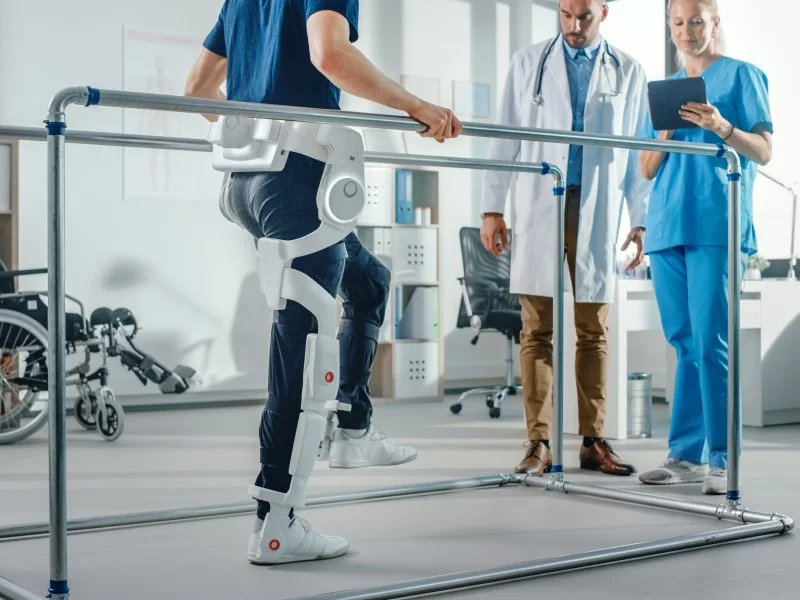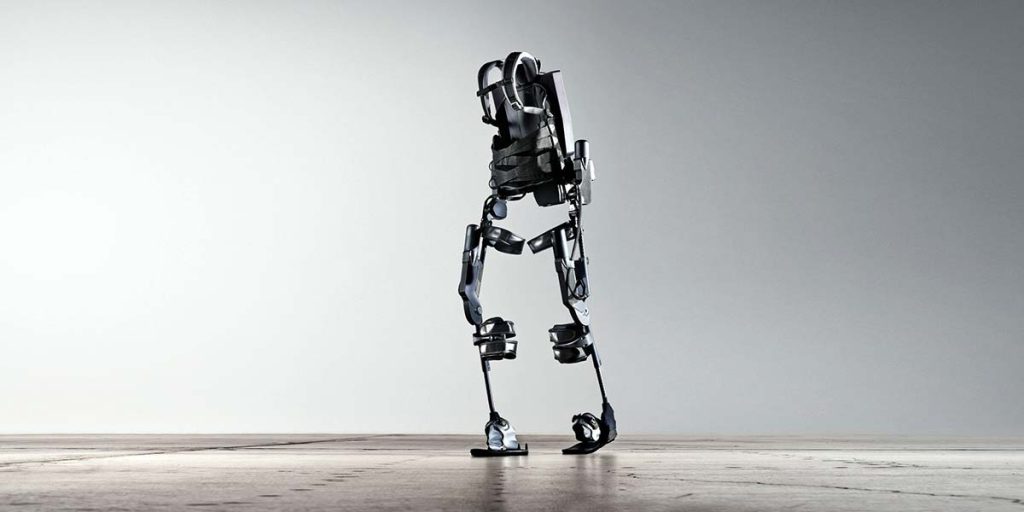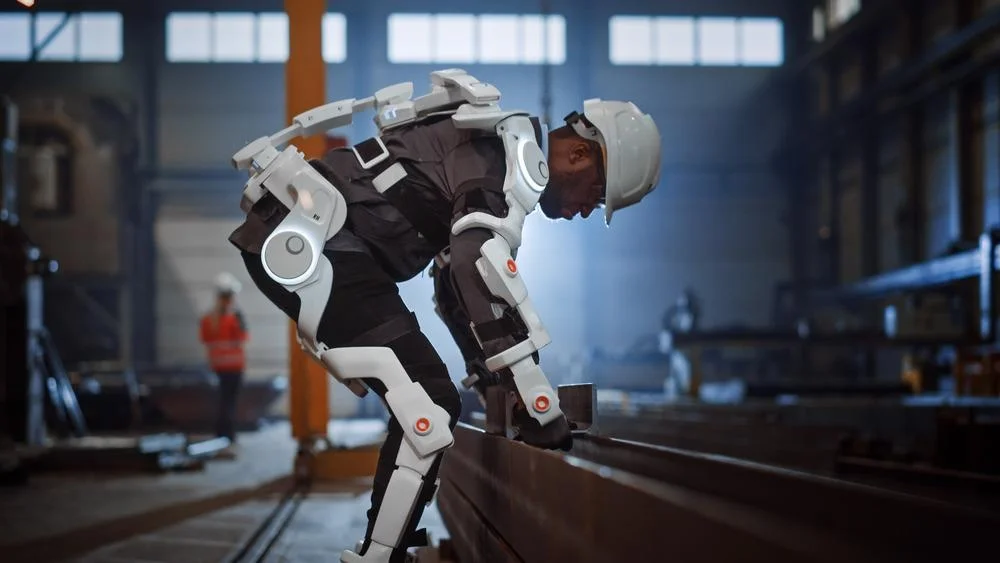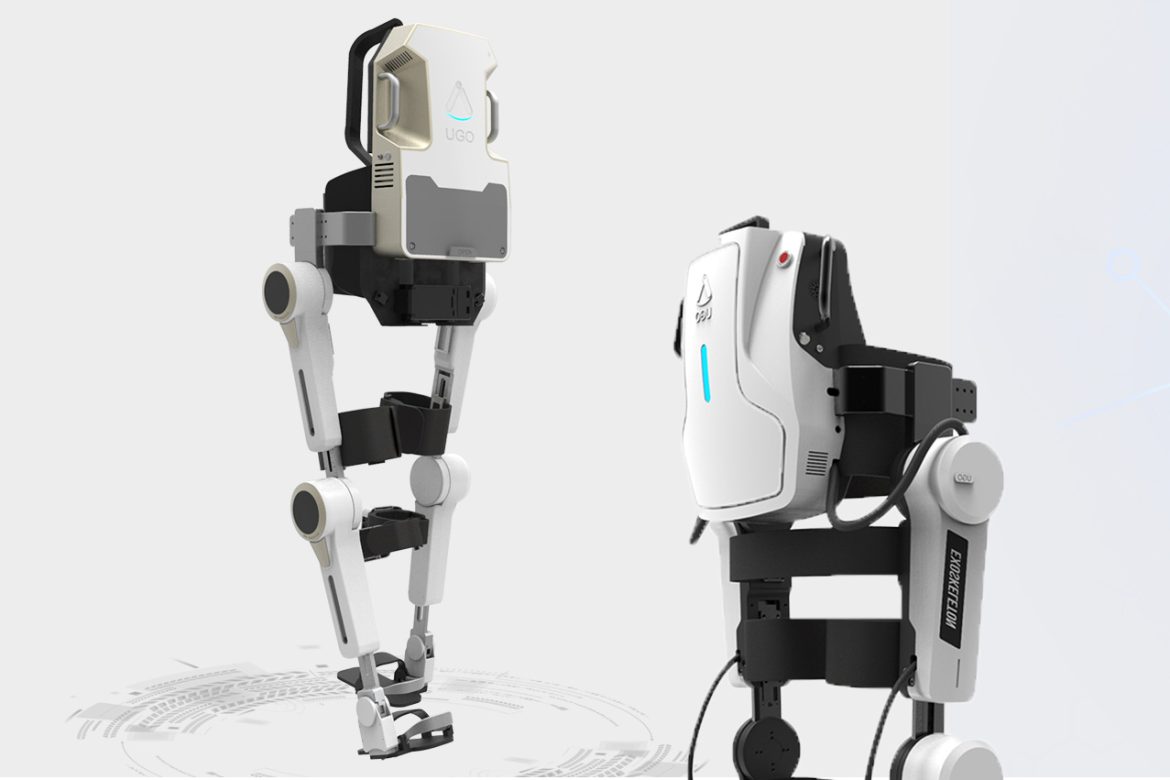Robotic exoskeletons represent a cutting-edge convergence of robotics, biomechanics, and artificial intelligence, offering transformative potential for mobility and rehabilitation. These wearable devices, designed to assist or augment the wearer’s movements, have emerged as a revolutionary technology with applications spanning from medical rehabilitation to industrial enhancements. This article explores the technology behind robotic exoskeletons, their benefits, current challenges, and future prospects.

Understanding Robotic Exoskeletons
Robotic exoskeletons are wearable mechanical devices that support, enhance, or mimic the wearer’s movements. They consist of a framework of joints, actuators, sensors, and control systems that work together to assist in movement or provide physical support. There are several types of robotic exoskeletons, each tailored to specific applications:
- Medical Exoskeletons:
- Definition: These exoskeletons are designed for rehabilitation and assistance in patients with mobility impairments. They help individuals regain or improve their ability to walk, stand, or perform daily activities.
- Examples: Devices like the ReWalk and EksoGT are used in physical therapy for spinal cord injury patients, enabling them to practice walking and improve muscle strength.
- Industrial Exoskeletons:
- Definition: Industrial exoskeletons are used to reduce physical strain and fatigue for workers performing repetitive or heavy lifting tasks. They enhance the wearer’s strength and endurance while reducing the risk of injury.
- Examples: The EksoVest and the Hocoma Valedo are designed to assist with lifting and support during manual labor, improving workplace safety and efficiency.
- Military and Tactical Exoskeletons:
- Definition: These exoskeletons are developed for military and defense applications to enhance soldiers’ strength, endurance, and mobility in challenging environments.
- Examples: The Lockheed Martin HULC and the Raytheon XOS are designed to augment soldiers’ physical capabilities and reduce fatigue during extended missions.
- Assistive Exoskeletons:
- Definition: Assistive exoskeletons aid individuals with mobility challenges due to aging or physical conditions by providing support for everyday tasks and improving independence.
- Examples: The HeroWear T-100 helps elderly users with mobility issues, providing support for standing and walking.
Key Benefits of Robotic Exoskeletons
- Enhanced Mobility and Independence:
- Rehabilitation Support: Medical exoskeletons assist individuals with spinal cord injuries or neurological disorders in regaining mobility. They facilitate physical therapy and improve the quality of life by enabling independent movement.
- Increased Independence: Assistive exoskeletons help elderly or disabled individuals perform daily activities with greater ease, promoting independence and reducing reliance on caregivers.
- Improved Physical Capability:
- Strength and Endurance: Industrial exoskeletons enhance workers’ strength and endurance, enabling them to perform physically demanding tasks with reduced effort and increased efficiency.
- Fatigue Reduction: By distributing the physical load and reducing strain, exoskeletons help minimize fatigue and lower the risk of musculoskeletal injuries.
- Enhanced Safety and Efficiency:
- Workplace Safety: Industrial exoskeletons improve safety by reducing the risk of injury from repetitive strain, heavy lifting, and awkward postures. This contributes to fewer workplace accidents and lower injury rates.
- Operational Efficiency: By supporting workers in physically demanding roles, exoskeletons increase productivity and reduce the need for breaks or downtime due to fatigue.
- Therapeutic Benefits:
- Muscle Strengthening: Medical exoskeletons assist in strengthening muscles and improving motor function through repetitive motion exercises, which are crucial for recovery and rehabilitation.
- Improved Posture: By providing support and stability, exoskeletons help individuals maintain proper posture and alignment, reducing the risk of secondary complications.

Challenges and Considerations
- Cost and Accessibility:
- High Costs: The development and production of robotic exoskeletons involve significant costs, making them expensive for individual users and healthcare systems. Reducing costs and improving accessibility are critical challenges.
- Insurance and Reimbursement: Navigating insurance coverage and reimbursement policies for medical exoskeletons can be complex, limiting their availability to those who need them.
- Comfort and Usability:
- Fit and Adjustability: Ensuring that exoskeletons are comfortable and adjustable for different body sizes and shapes is essential for effective use. Poor fit can lead to discomfort and reduced effectiveness.
- Ease of Use: Simplifying the operation and control of exoskeletons is important for user acceptance and effectiveness. Intuitive interfaces and training are necessary for optimal use.
- Technical Limitations:
- Battery Life: Many exoskeletons rely on battery power, and improving battery life and efficiency is crucial for extended use and reliability.
- Sensor Accuracy: Enhancing the accuracy and responsiveness of sensors and control systems is important for seamless integration with the wearer’s movements and intentions.
- Ethical and Social Implications:
- Privacy and Data Security: Exoskeletons equipped with sensors and data collection capabilities must address privacy concerns and ensure that user data is protected.
- Social Acceptance: The integration of exoskeletons into daily life and work environments requires addressing social attitudes and ensuring that the technology is embraced and supported.
Future Trends and Developments
- Advancements in AI and Robotics:
- Enhanced Control Systems: Future exoskeletons will benefit from advancements in AI and robotics, leading to more sophisticated control systems that adapt to the wearer’s movements and intentions.
- Improved Mobility and Flexibility: Ongoing research will focus on developing exoskeletons with greater mobility, flexibility, and versatility to suit a wide range of applications and users.
- Integration with Wearable Technology:
- Smart Features: Integration with wearable technology, such as smart sensors and health monitoring devices, will enhance the functionality and effectiveness of exoskeletons.
- Data-Driven Insights: Advanced analytics will provide valuable insights into user performance, rehabilitation progress, and ergonomic factors, leading to improved design and functionality.
- Cost Reduction and Accessibility:
- Affordable Solutions: Efforts to reduce manufacturing costs and increase production efficiency will make robotic exoskeletons more affordable and accessible to a broader range of users.
- Expanded Applications: The development of cost-effective exoskeletons for various applications, including everyday assistance and recreational use, will drive widespread adoption.
- Collaboration and Innovation:
- Cross-Disciplinary Research: Collaboration between researchers, engineers, healthcare professionals, and industry stakeholders will drive innovation and address challenges in exoskeleton development.
- User-Centric Design: Involving users in the design and testing process will ensure that exoskeletons meet the needs and preferences of diverse user groups, leading to more effective and user-friendly solutions.

Conclusion
Robotic exoskeletons represent a transformative technology with the potential to revolutionize mobility, rehabilitation, and industrial work. By enhancing physical capabilities, improving safety, and supporting independence, exoskeletons offer significant benefits across various domains. However, addressing challenges related to cost, comfort, technical limitations, and ethical considerations is essential for maximizing the impact of this technology. As advancements continue and new trends emerge, robotic exoskeletons will play a pivotal role in shaping the future of human movement and interaction with technology.


